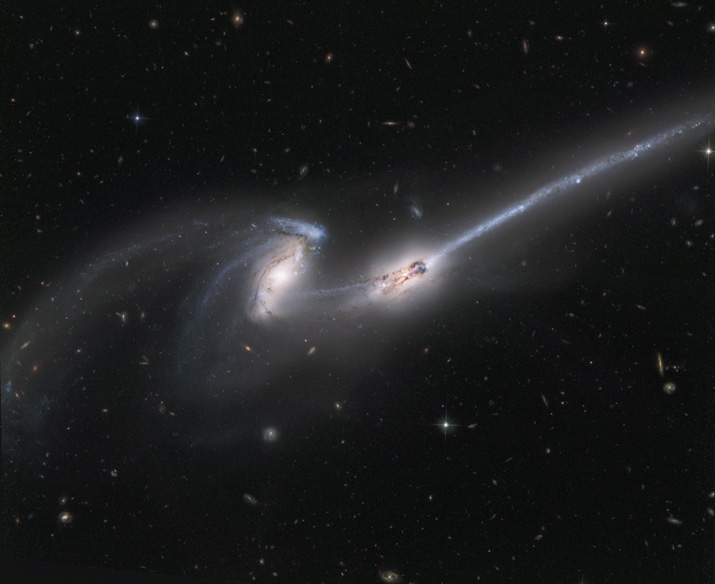
|
Processed July 29, 2012 by Donald Waid Images from the Hubble Legacy Archive Camera: ACS - Filters: Red (f814w) Green (f606w) Blue (f475w) Click on the image below to view at higher resolution. --> |
|
NGC 4676 is approximately 290 million light years from the Earth and lies in the constellation of Coma Berenices. This system is commonly known as The Mice Galaxies. These two spiral galaxies are in the process of colliding and most probably merging. Strong gravitational interaction is severely distorting both galaxies. The attractive force of gravity acting on the near sides of the galaxies is much stronger than on the far sides. This effect is known as a galactic tide and is responsible for the tail like structure extending from the galaxies. Our own Milky Way is destined to under go a similar fate when it and the Andromeda Galaxy (M31) merge in about 4 billion years. This image was assembled with data obtained from the Hubble Legacy Archive. Three wide band filtered images were used for the red, green and blue channels. These were imaged using filters of f814w for red, f555w for green and f475w for blue. An image consisting of a combination of many filters was used for the luminance channel. This image is classified in the Hubble Legacy Archive as a detection, or white light, image. The color image was created as a standard LRGB image.
1Based on observations made with the NASA/ESA Hubble Space Telescope, and obtained from the Hubble Legacy Archive, which is a collaboration between the Space Telescope Science Institute (STScI/NASA), the Space Telescope European Coordinating Facility (ST-ECF/ESA) and the Canadian Astronomy Data Centre (CADC/NRC/CSA). |
